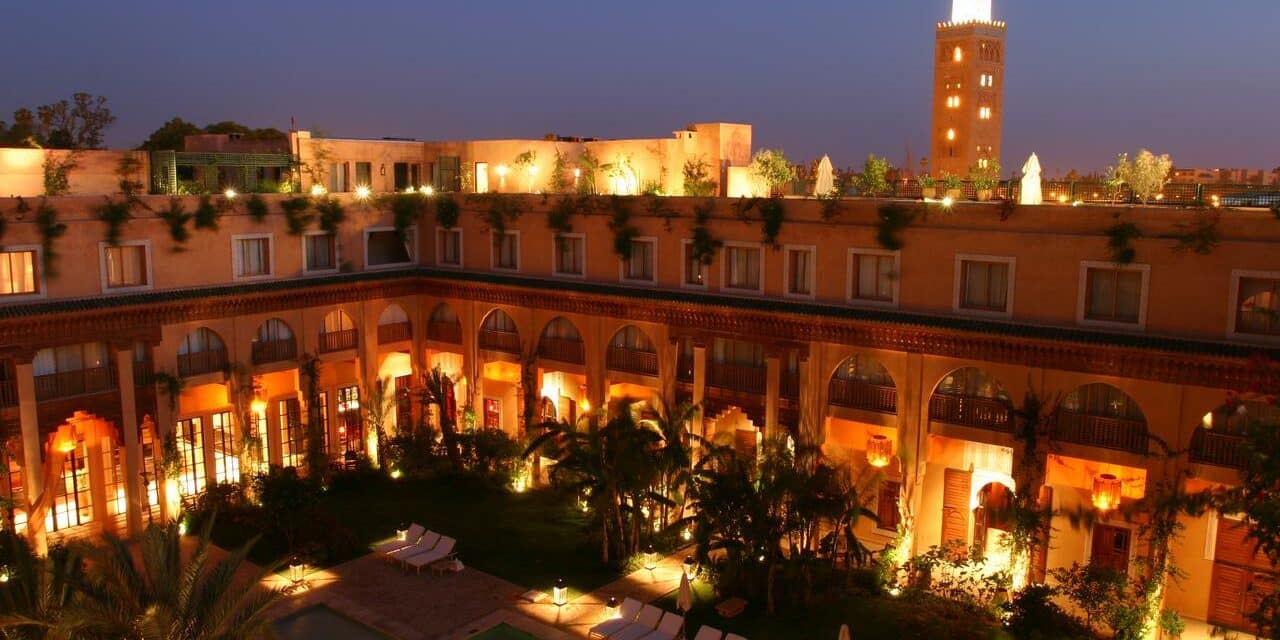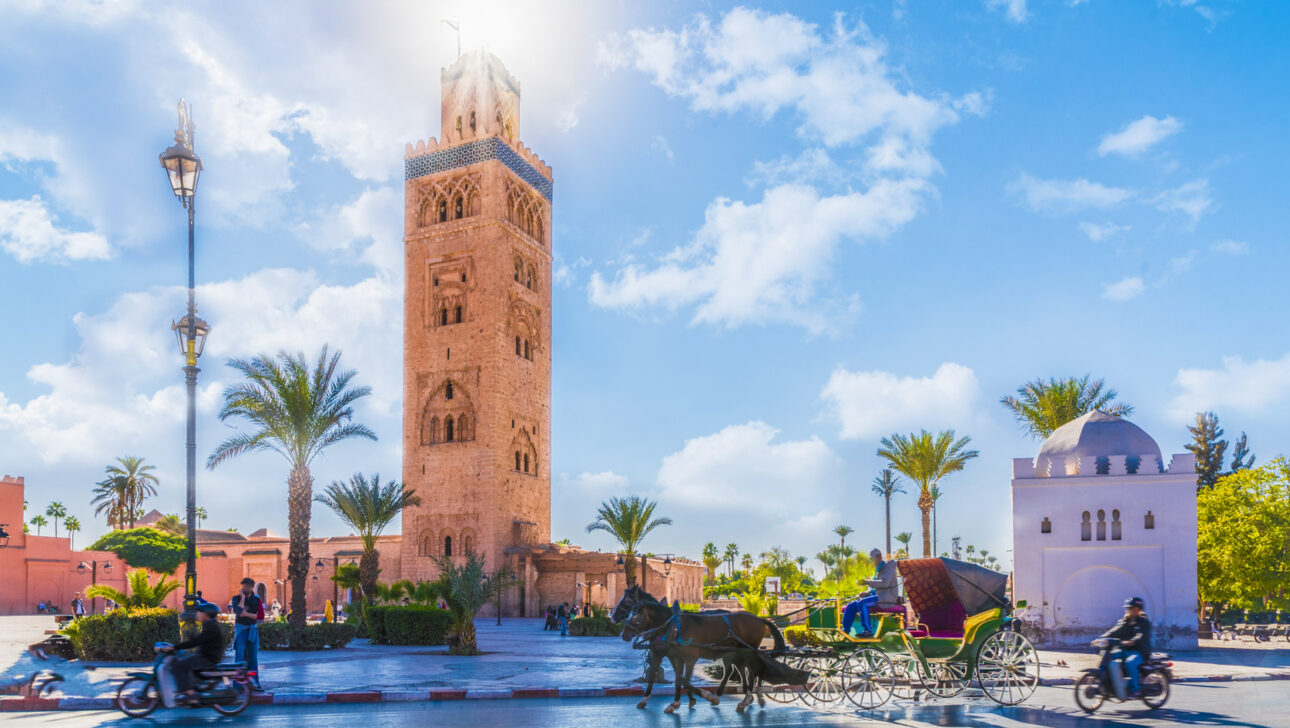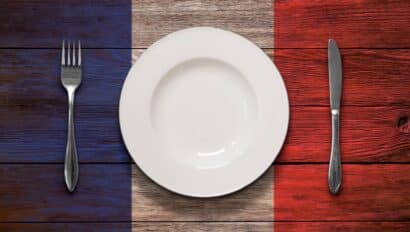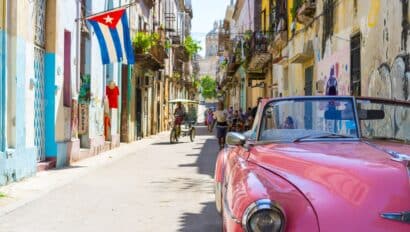Away from Ernest Hemingway’s Tangier and Humphrey Bogart’s Casablanca, the allure of Morocco’s caravan route takes center stage for those who want an authentic break exploring a culture full of intrigue, and landscapes full of surprises.
Morocco was the last stop on the silk and spice route that brought goods from Asia to Europe for 1400 years. The Portuguese and Spanish set up ports on the coast, bringing with them the spices found today in open-air and covered markets that date back to the 9th century.
The storied Berber culture of North Africa has deep roots in trade, while a rich Islamic history includes the oldest library and university in the world. France, Spain, Britain, and the United States all played a part in the country during the 20th century, leaving parts of their legacies behind that include the works of resident writers and artists like Henri Matisse and Tennessee Williams.
A trip to Morocco is a journey of all the senses. Vivid colors of bustling markets, traditional music from unseen courtyards, the air thick with spices from slow-cooked stews, and textiles made from silk or wool bring the history and collage of cultures to life during time spent exploring.
Must-see places in Morocco include Fes, the spiritual capital of the country and home to its oldest market, the Atlas Mountains, where Berber villages still keep their traditions alive, and the outposts of the Sahara Desert. Marrakesh also tops the list, known as a center for scholars and one of the country’s four imperial cities that was once the capital of the country.
#1 Experience the Medina of Fes
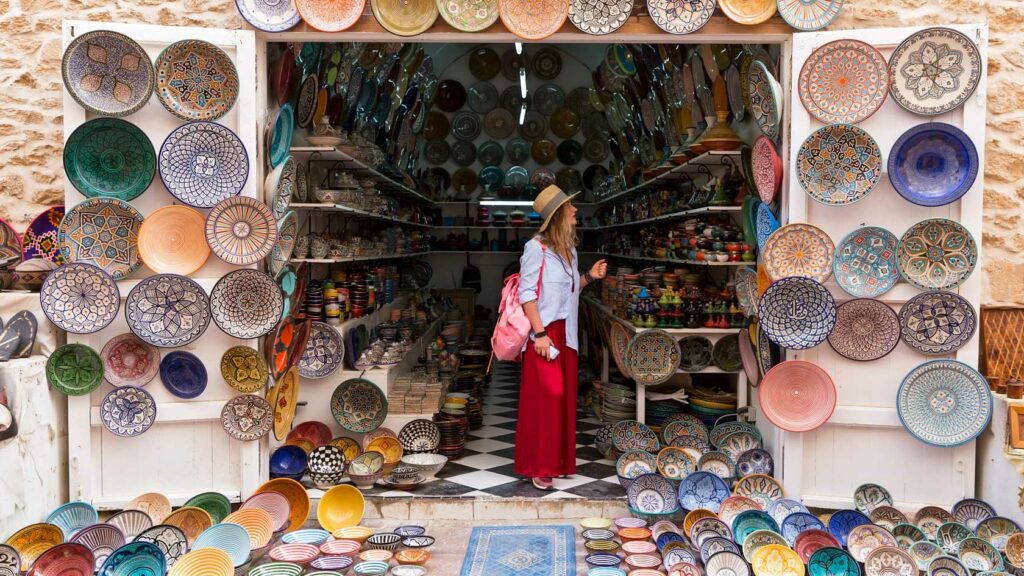
Fes is the oldest city in the country, established in the 9th century by the great, great-grandson of the Prophet Muhammad. Its medina, or historic center, is pedestrian-only. A sprawling network of alleyways that weave through the ancient, medieval part of the city brimming with almost 200 mosques, souks-bazaars filled with merchants selling food, spices, pottery, rugs, handcrafts, and copper cookware. It is also home to the world’s oldest library which opened in 859 and was recently renovated to protect the books and scrolls inside. The al-Qarawiyyin library was founded by the daughter of a Tunisian merchant along with the world’s oldest university of the same name.
The medina of Fes is also famous for its leather. In the leather quarter of the city, colorful pots of dye fill squares where artisans work hides with their feet to make sure the color holds.
While the mosques of Morocco are off-limits to non-Muslims, many of the schools in the city perform traditional religious music, bringing melodies to the air away from the din of the busy market.
#2 Traverse the Atlas Mountains
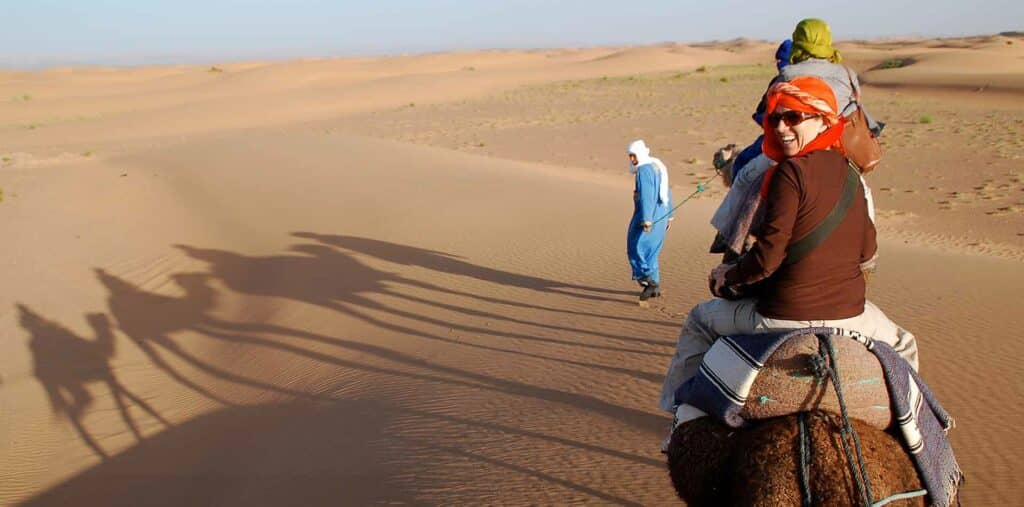
The Atlas Mountains hold a different treasure in their midst. Starting just south of Fes, the forested foothills of the region reveal trails used by Berber people for thousands of years.
Originally the mountains were a refuge from the Arab invasion in 700 AD. Berber villages served as rustic havens where traditions and even the language were preserved from the influences of Islam.
One way to really immerse oneself into the culture of the country is visiting with a local family, which gives a glimpse into a way of life that has survived generations and dynasties.
A motor transport through the mountains leads to the sand dunes of Merzouga, the highest in the country, and another of the must-see places in Morocco.
#3 Spend The Night in a Berber Camp in Merzouga
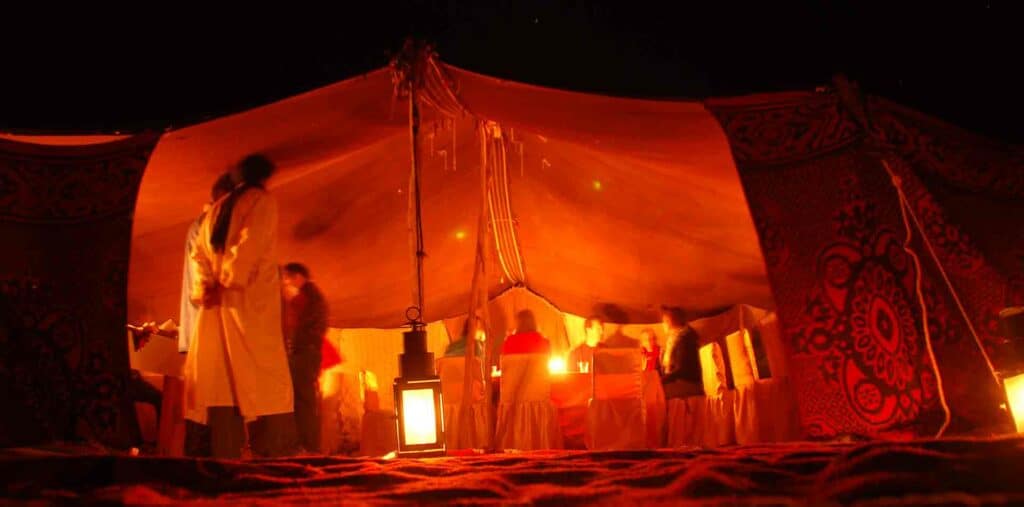
A highlight of any trip to Morocco is a sunset camel ride in the Merzouga dunes and the journey to a Berber camp in the Sahara Dessert.
The best camps are respite with opulent tents, traditional live music as entertainment, and tagine dinners. A tagine is a traditional stew that combines cumin, cinnamon, and meat in a clay pot. The pot’s cone top gathers condensation from the mixture below and combines the flavors, and falls back into the mix, making a savory feast well worth the time it takes to simmer.
When the sun rises the next day, the dessert’s full glory comes into focus, spanning out to the horizon in waves of sand that change as the day continues. After leaving the luxury tented encampment, a drive takes you to the edge of the desert to new terrain. Palm and almond trees shelter fields of mint, alfalfa, and barley, that are used in traditional mint tea. Walking here is an immersion into the transition zone between desert and mountains where ancient outposts were part of the trading route for those going between Fes and Marrakesh.
#4 Gaze at the Desert Sky from Ouarzazate
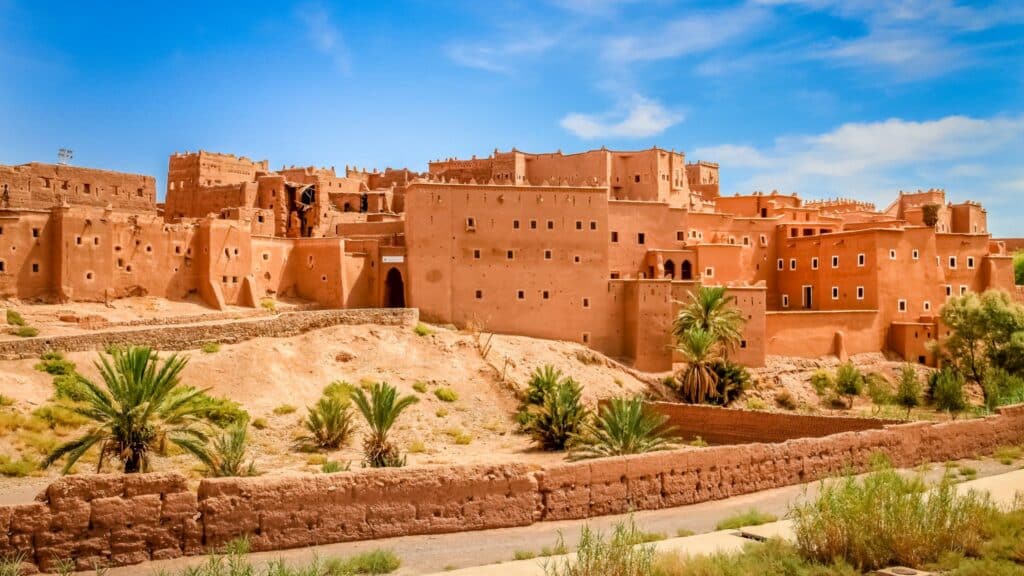
Far from leaving its grandeur in the past, Ouarzazate is known as the gateway to the Sahara. Tan buildings blend into the surroundings while brilliantly contrasting the bright blue hues of the sky above.
It’s also known as the country’s movie capital, acting as a base for scores of Hollywood films that use the desert, and the nearby restored Ait Ben Haddou Kasbah as sets. Parts of “Gladiator” and “Lawrence of Arabia” were filmed here, and “Game of Thrones” also used the city as a backdrop.
The Kasbah is a UNESCO world heritage site, and for good reason. It’s the best example remaining today of an intact walled Moroccan village. A few Berber families still live here, and the scenes from everyday life and the panoramic views from the walls over the desert in the distance give pause amid the comings and goings of the modern age.
#5 Experience the History of Marrakesh
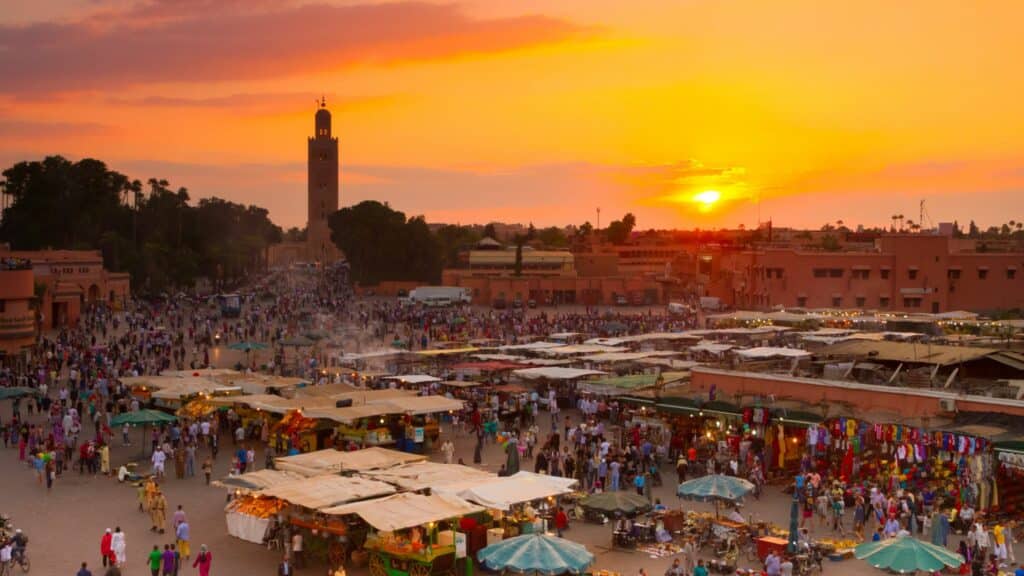
Marrakesh was the capital of four dynasties. Wealthy merchants created lavish spaces within the city’s Medina, and it became an intellectual, as well as a trade center for the region in the different stages of the country’s growth.
The historic section of the city houses Djemaa el Fna, a 17th-century central square that has a prime spot on the must-see places in Morocco list. The square is a meeting place for native Moroccans, a food court for the people of the city, a cultural landmark for those who visit, and an entertainment emporium for all of the above.
After the morning food vendors finish, fortune tellers, musicians, storytellers, troupes of acrobats, and jugglers set up shop in the interim between morning and afternoon. As dusk approaches the local food vendors claim their corners of the square selling tagines, juices, sandwiches, and Moroccan street food delicacies past sunset. The whole show packs up early and goes home, only to start a new the next day as it has done for centuries.
The souks of Marrakesh rival any other in the country and are among the most well know, and traditionally well-traveled in Africa. Animal hides, drums, swords, piles of brightly colored spices, pottery, and a litany of other goods change hands amid the daily hustle of the Medina’s streets.
The Yves Saint Laurent botanical gardens are another highlight in Marrakesh, continuing a tradition brought to popularity by royal families. French painter Jacques Majorelle spent 40 years designing and creating the urban oasis. Composed, colored, and created like a painting, the two-and-a-half-acre enclave captures the vivid spirit of the city. French fashion designer Yves Saint Laurent bought the property 18 years after the artist’s death when a developer threatened its survival. The fashion mogul fell in love with the colors of the city and the elegant gardens within its confines.
